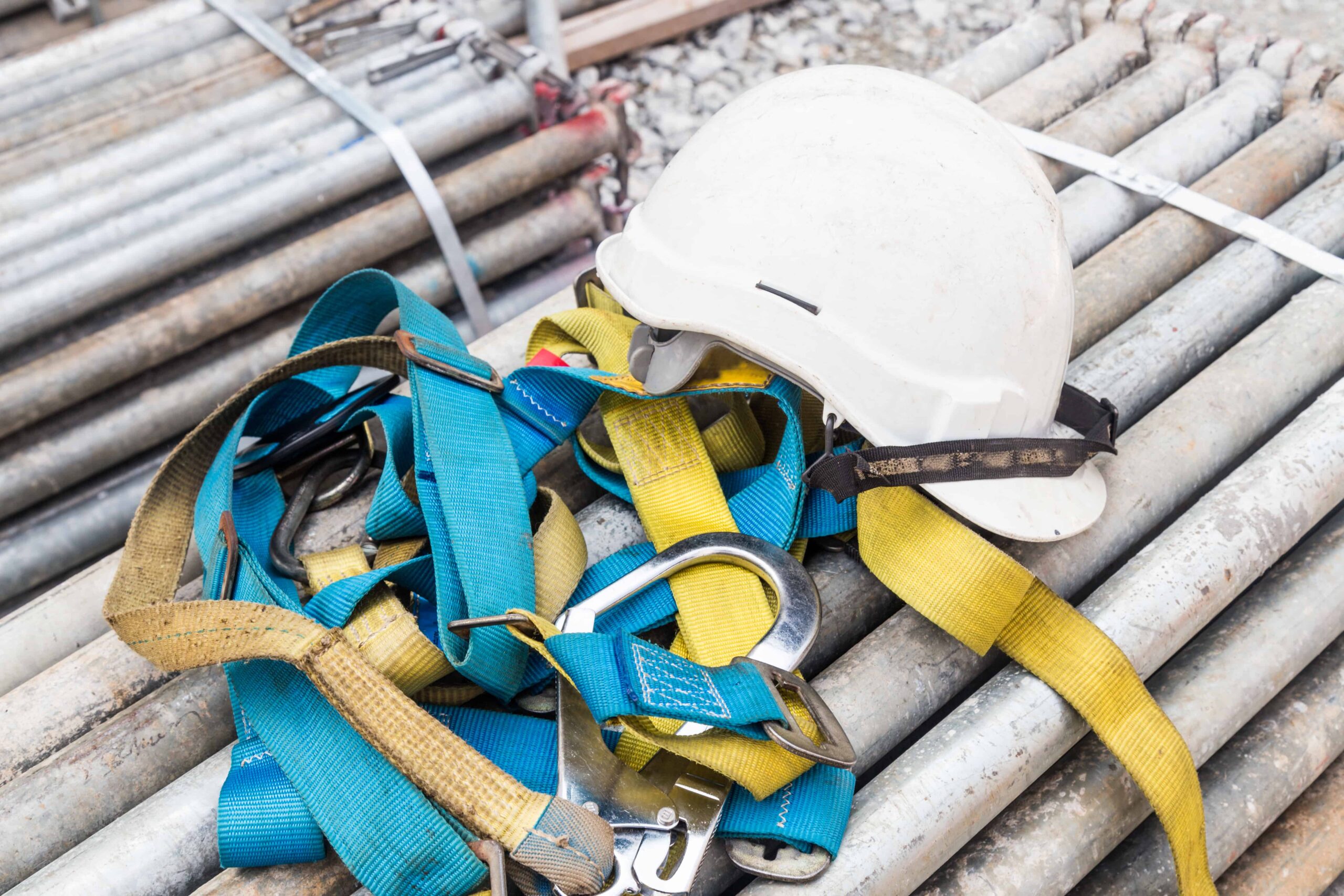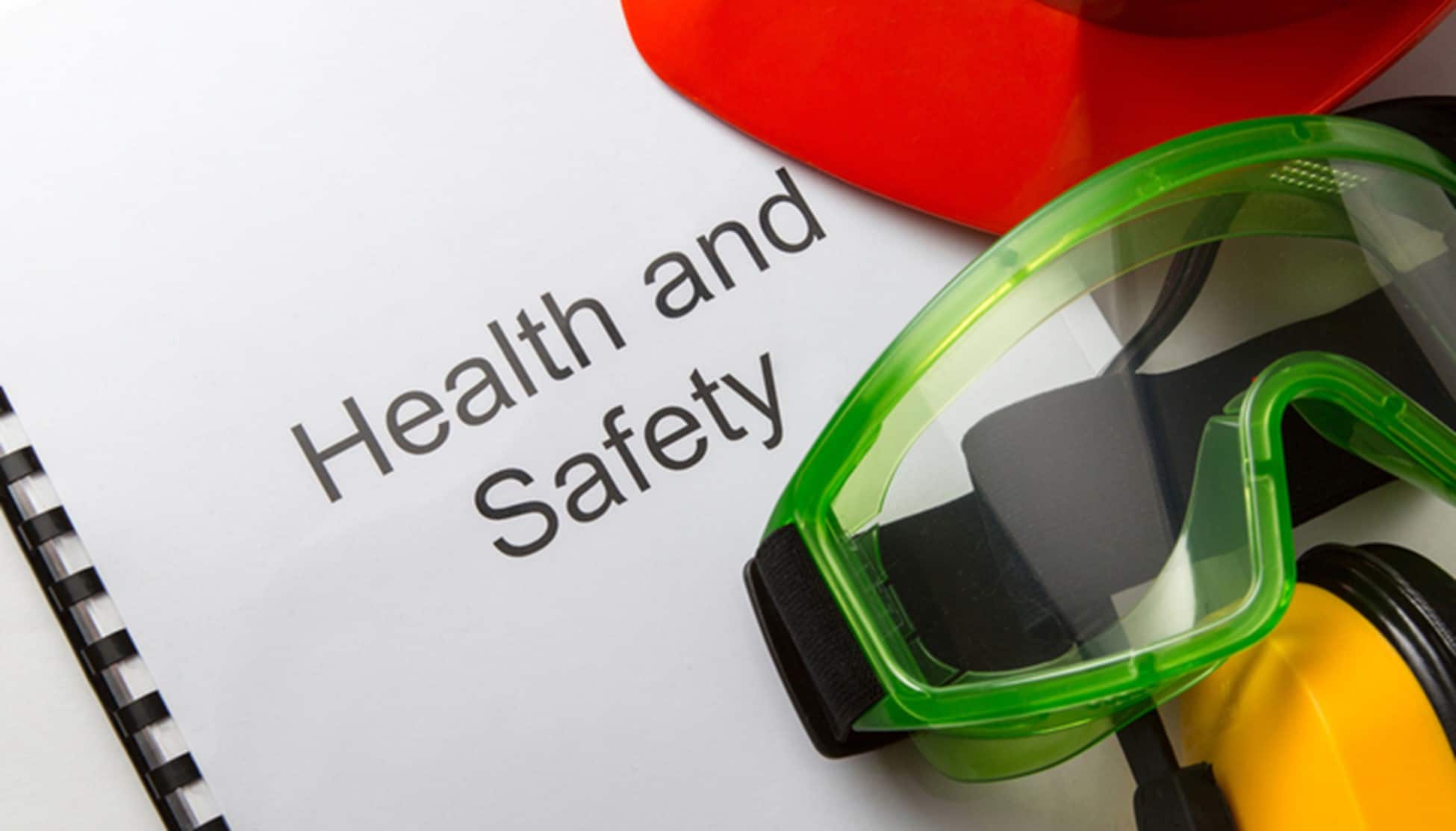
The Occupational Safety and Health Administration (OSHA) has one clear goal: to reduce the number of workplace injuries, illnesses, and fatalities as much as possible. This organization provides a series of regulations, policies, and standards that employers and employees across the country need to meet. Additionally, OSHA provides training and certifications for those who want to learn more about workplace hazards and their mitigation. We’re going to unpack one of the most sought-after training in this guide on how to get an OSHA 10 certification.
According to the Workplace Injuries and Illnesses report by the US Bureau of Labor Statistics, there were 2.8 million nonfatal workplace injuries in 2019. The number is virtually unchanged from 2018, meaning that over 5 million people have been injured on duty in the last two years alone.
In an effort to prevent these incidents in the future, the Occupational Safety and Health Administration has put together the Outreach Training Program.
This program consists of two types of courses: OSHA 10 and OSHA 30. Depending on your location, the courses may be optional or required by your employer, the city, or the state you live in. Even though they cover many of the same subjects, there are distinct differences between these certifications.
OSHA 10 and OSHA 30
The OSHA 10 is short for ‘OSHA 10-hour training’. Similarly, the OSHA 30 stands for ‘OSHA 30-hour training’.
The OSHA 10-hour courses are meant for entry-level and non-supervisory workers. This training offers workers an opportunity to familiarize themselves with the most common workplace hazards. They learn more about the recognition, avoidance, abatement, and prevention of the hazards. They also learn about the responsibilities of their employers, their own rights and responsibilities, and how to file a complaint.
The OSHA 30-hour training is designed for those who have more responsibility when it comes to workplace safety, such as supervisors, safety directors, and foremen. The 10 and 30 courses share the majority of topics, with the main difference being that the 30-hour course provides more insight into each one.
Both types of training emphasize hazard identification, mitigation, and prevention, not OSHA standards. However, generally speaking, you don’t need both of these certifications. OSHA 10 is not a prerequisite for OSHA 30. At the same time, if you’ve already taken OSHA 10, those ten hours cannot be counted towards your OSHA 30. You can only upgrade OSHA 10 to 30 by completing 20 additional hours with the same instructor within 6 months of the OSHA 10.
Benefits of OSHA Certifications
One of the crucial benefits of OSHA certifications is that they promote safety culture in different industries. There is nothing more important than keeping yourself and your coworkers healthy and safe while you’re performing difficult, sometimes even dangerous tasks. Being aware of potential workplace hazards, and knowing how to avoid or control them is key to a long and healthy life. This is true for those working in heavy industries as well as for those who work office jobs.
During the OSHA training, you will earn hands-on experience. Learning by practicing is much more effective for retaining knowledge than learning by other means, such as watching a presentation or an instructional video. Even online OSHA training has activities that will keep you engaged and help you understand the subject matter better.
OSHA 10 and 30 training topics are tailored to the needs of the audience. There is a selection of topics for each course, and the trainer decides what to present to the trainees depending on the type of work they do.
Finally, OSHA courses are available in multiple languages, such as Spanish, Polish, and others. OSHA is adamant about the workers’ rights to be educated on workplace risks in a language they can fully understand.
Training Programs
There are three types of OSHA Outreach courses: for the construction industry, general industry, and maritime industry. All of these courses come in 10 and 30-hour versions.
Disaster site workers (who provide support services or site-clean up in case of natural or human-made disasters) have their own OSHA course in 7.5 and 15-hour versions. To apply for either of those, you first need to complete the 10-hour or 30-hour course for the construction or general industry.
In order to pass any of these OSHA training courses, there is usually some type of a test at the end. OSHA doesn’t mandate this, but most trainers provide a final exam that will assure them you’ve gotten a solid grasp on the material. Instructors may define a passing grade that is anywhere from 70% to above. Keep in mind that you might need to set aside some time for studying as you go through the course.
Construction Industry Training
Construction workers who are involved in building development, repairs and alterations, and other construction fields are the focus group of OSHA construction training course. As with all other OSHA Outreach courses, this one is divided into three parts: mandatory topics, elective topics, and optional topics.
OSHA 10 Construction Course
Mandatory topics (6 hours):
- Introduction to OSHA (filing complaints, employer responsibilities, workers’ rights)
- Construction Health Hazards
- OSHA “Focus Four” Workplace Hazards (struck-by, falls, electrocution, caught-in or between)
- Personal Protective and Lifesaving Equipment
Elective topics (2 hours):
- Excavations
- Handling, Storage, Usage, and Disposal of Materials
- Scaffolds
- Hand and Power Tools
- Stairways and Ladders
- Cranes, Hoists, Derricks, Conveyors, and Elevators
Not all elective topics need to be covered during the course. At least two should be explored, with at least 30 minutes dedicated to each one.
Optional topics are studied for 2 hours. These can be topics already mentioned in the course, or they can be any other hazard or policy related to the construction industry.
OSHA 30 Construction Course
Mandatory topics (14 hours):
- Introduction to OSHA (filing complaints, employer responsibilities, workers’ rights)
- OSHA “Focus Four” Workplace Hazards (struck-by, falls, electrocution, caught-in or between)
- Managing Safety and Health (injury and illness prevention programs, worksite analysis, job site inspections, how to conduct safety meetings, etc.)
- Health Hazards in Construction
- Personal Protective and Lifesaving Equipment
- Stairways and Ladders
Elective topics (12 hours):
- Excavations
- Handling, Storage, Usage, and Disposal of Materials
- Scaffolds
- Hand and Power Tools
- Stairways and Ladders
- Cranes, Hoists, Derricks, Conveyors, and Elevators
- Ergonomics
- Confined Space Entry
- Concrete and Masonry Construction
- Fire Protection and Prevention
- Powered Industrial Vehicles
- Foundations for Safety Leadership
- Welding and Cutting
- Motor Vehicles, Marine Operations, and Mechanized Equipment; Signs, Signals, and Barricades; Overhead Protection and Rollover Protective Structures
- Safety and Health Programs
Similarly to the OSHA 10 course, at least six of the elective topics must be covered, with at least 30 minutes per topic.
Optional topics (4 hours) are the same as for the OSHA 10-hour training course.
General Industry Training
General industry workers are healthcare professionals, manufacturing workers, warehouse staff, and factory workers.
OSHA 10 General Industry Course
Mandatory topics (6 hours):
- Introduction to OSHA (filing complaints, employer responsibilities, workers’ rights)
- Hazard Communication
- Personal Protective Equipment
- Electrical Safety
- Walking and Working Surfaces (including Fall Protection)
- Fire Prevention Plans, Exit Routes, Emergency Action Plans, and Fire Protection
Elective topics (2 hours):
- Ergonomics
- Machine Guarding
- Hazardous Materials
- Materials Handling
- Safety and Health Program
- Fall Protection
- Introduction to Industrial Hygiene
A minimum of two topics has to be presented, with at least 30 minutes dedicated to each elective topic.
Optional topics (2 hours) are the same as in previous courses, only related to the general industry.
OSHA 30 General Industry Course
Mandatory topics (12 hours):
- Introduction to OSHA (filing complaints, employer responsibilities, workers’ rights)
- Hazard Communication
- Managing Safety and Health
- Personal Protective Equipment
- Electrical Safety
- Walking and Working Surfaces (including Fall Protection)
- Fire Prevention Plans, Exit Routes, Emergency Action Plans, and Fire Protection
- Materials Handling
Elective topics (10 hours):
- Ergonomics
- Machine Guarding
- Hazardous Materials (Compressed Gases, Flammable and Combustible Liquids, Dipping and Coating Operations, Spray Finishing)
- Safety and Health Program
- Fall Protection
- Introduction to Industrial Hygiene
- Permit-Required Confined Spaces
- Bloodborne Pathogens
- Industrial Powered Vehicles
- Lockout/Tagout
- Welding, Curring, and Brazing
Optional topics (8 hours) are the same as in the 10-hour general industry course.
Maritime Industry Training
Lastly, maritime industry training is for those who work in the construction, repair, and scrapping of vessels or moving cargo and other materials. The maritime industry OSHA training is divided according to three sectors: Marine Terminals, Shipyard Employment, and Longshoring.
OSHA 10 Maritime Industry Course
Mandatory topics (3 hours, for all three sectors):
- Introduction to OSHA (filing complaints, employer responsibilities, workers’ rights)
- Walking and Working Surfaces
- Personal Protective Equipment
Additional mandatory topics for Shipyard Employment (4 hours):
- Fire Protection
- Electrical
- Fall Protection/Scaffolding
- Confined and Enclosed Spaces
Elective topics (Shipyard Employment – 1 hour; Marine Terminals and Longshoring – 4 hours):
- Respiratory Protection
- Hazard Communications/Hazardous Materials
- Lockout/Tagout
Additional elective topics for Marine Terminals and Longshoring:
- Confined and Enclosed Spaces
- Electrical
- Fall Protection
- Fire Protection
Optional topics (Shipyard Employment – 2 hours; Longshoring and Marine Terminals – 3 hours):
- Bloodborne Pathogens (Universal Precautions, Spills and Decontamination, Exposure Control Plan)
- Material Handling
- Hot Work – Welding, Burning, and Cutting
- Machine Guarding
- Proper Lifting Techniques and Ergonomics (muscle strains and repetitive motion)
- Additional coverage on any previous topic, maritime industry hazard, or policy
OSHA 30 Maritime Industry Course
Mandatory topics for all three sectors (7 hours):
- Introduction to OSHA (filing complaints, employer responsibilities, workers’ rights)
- Walking and Working Surfaces
- Personal Protective Equipment
- Managing Health and Safety
Mandatory topics only for Shipyard Employment (8 hours) are the same as in the OSHA 10 maritime course.
Elective topics (Marine Terminals and Longshoring – 8 hours; Shipyard Employment – 2 hours) are the same as in the OSHA 10 maritime course.
Optional topics (Martine Terminals and Longshoring – 15 hours; Shipyard Employment – 13 hours) are the same as in the OSHA 10 maritime course.
Facts About OSHA Certifications
During your research into OSHA training, you might have come across complaints from trainees who were conned out of their time and money. Unfortunately, with such high demand for DOL (Department of Labor), OSHA cards can come with a few fraudulent courses and trainers. These trainers don’t provide the necessary education during the course and they don’t have the right to issue an official DOL card at the end.
To help you avoid these scammers, here is a list of facts about the OSHA 10 and 30 courses. Read through them carefully and keep them in the back of your mind as you’re looking for a place to apply for training.
- There are no requirements for any of these courses (except for the disaster site training). You don’t need to take any training beforehand, nor do you need any specific education level. You don’t have to be employed, and there is no minimum age requirement for participating in the Outreach Training Program.
- Only OSHA-authorized trainers can provide training and issue DOL cards.
- To make the entire process more secure, OSHA provides a list of authorized trainers on their official website. There, you will see the trainer’s name and contact information, as well as what courses they’re authorized to teach. Take advantage of this list and check the validity of the trainers you’re considering.
- Don’t buy into organizations that guarantee employment after you get certified. While an OSHA 10 or 30 certification will contribute to your resume and make you look good for future employers, it is not a direct road to a new job. OSHA does not require any worker to have an OSHA card. It is entirely voluntary.
- If your workplace contains safety and health hazards that mandate training, you might have to complete additional training even if you have an OSHA card. This includes chemical hazards, fall protection, and operator training if you’re working with specific industrial vehicles. This additional training should be set up by your employer.
- An OSHA 10 course can last for two days, while OSHA 30 can last for four days. Once you start a course, you have to complete it within the next six months. If you go over six months, you will have to start over.
- Lastly, if you do stumble upon a fraudulent trainer, it would be best to report them. Contact the Department of Labor’s Office of Inspector General if you have any doubts about a trainer’s authorization.
OSHA 10 and 30 Documents
Once you’ve met all the criteria for passing the Outreach Training course, you will receive two types of documents:
- Wallet Card – Also known as the OSHA or the DOL cards, these are issued by the authorized instructors. They will be mailed to you after the completion of the course. There are separate cards for OSHA 10 and 30. Since 2016, the completion cards are made from plastic that is quite durable, so you can easily carry them around. Once you receive your card, there is no expiration date.
If you lose your card and want a replacement, you must contact your trainer and pay a $30 cost. They will get in touch with the OSHA training organization, and they will issue the replacement card. However, replacement cards can only be provided for training completed in the last five years.
- Certification – You will obtain certification when you successfully complete the course. This is proof that you got OSHA 10 or 30 training and it is normal for an employer to ask for a copy of this from you since they need to provide training records to OSHA.
Should You Get OSHA 10 Certification
There are multiple reasons why a worker or an aspiring worker may want to obtain an OSHA 10 certification. The chief of these is getting a new job or job promotion, increased job security, better workplace safety, or all of these combined.
However, those living in Nevada, New York, Missouri, and Connecticut are obligated by law to complete either the 10 or the 30-hour training program. In Connecticut, this is limited to specific job sites.
The final decision for OSHA 10 or 30 training depends on the benefits you expect to get from it. More knowledge of occupational hazards and safety is always a good thing.
Conclusion
The OSHA Outreach Training Program has been put in place to provide as many workers as possible with inexpensive quality education on the subject of occupational health and safety. Construction workers and those in the general and maritime industry sectors can choose between the 10-hour training and the 30-hour training.
These two programs mostly cover the same mandatory, elective, and optional topics. The 30-hour course goes more in-depth on what is mentioned in the 10-hour course, with slight changes in topics here and there. If you’re an entry-level worker, the OSHA 10 is more than enough. If you’re a field supervisor or someone responsible for workplace safety, you might want to look into the OSHA 30 instead.
While you’re looking for the right organization and instructors, don’t forget to check whether they are OSHA-authorized on the OSHA official website. Be wary of fraudulent claims and courses.
Once you complete your course, you will receive certification. A wallet card will arrive in the mail a couple of weeks later, so you can show it to your current and future employers if necessary.
Even though taking these courses is voluntary in most states, you might be living in a place where it is obligatory by law. Before you decide to search for a job, look up whether that’s the case and whether you need a certification to even apply for work.
Do you have any questions about the OSHA 10 or 30 certification? Feel free to contact us at SAFE for additional information. Send an email to larry@safety4employers.com or give us a call at 775-843-8318, and we will help you get the training you need.








